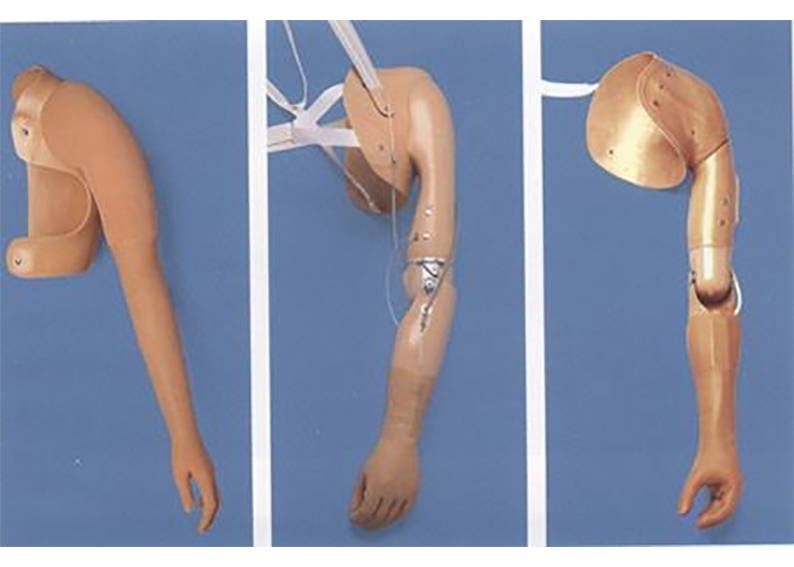• Prosthetic finger: A decorative prosthesis for amputation of fingers.
• One-finger fake finger
• Partial hand prosthesis: A partial hand prosthesis is a half-hand prosthesis.
• Wrist amputation prosthesis: it is suitable for amputees who have severed wrist joint and whose stump length remains at least 80% of the forearm (usually within 5cm of the ulna styloid process). After wrist dissociation, the residual limb retains the pronation and supination of the forearm
The girth can reach 90° in front and 90° in back.
• Forearm prosthesis
• Elbow amputation prosthesis: For amputees whose elbow joint is severed or whose upper stump length remains at least 85% (usually within 5cm of the lateral epicondyle of the humerus).
• Upper arm prosthesis: it is suitable for amputees with 30 ~ 80% of the stump length of the upper arm remaining (usually 9 ~ 24cm below the acromion).
• Shoulder disconnection prosthesis: Shoulder disconnection prosthesis is suitable for shoulder disconnection, upper band disconnection (scapula and clavicle amputation) and upper arm amputation with stump length less than 30% (usually within 8cm below the acromion).
• Scapular-thoracic prosthesis: a prosthesis for scapular-thoracic amputations. Also known as decorative hand. This kind of artificial hand is not engaged in labor and life self-care function, just to compensate for the appearance of the body defect and design.
• Forearm receptor cavity: Receptor cavity for forearm prosthesis.
• Condyle suspension test Forearm acceptance cavity: a forearm acceptance cavity with its own suspension by covering both the stump and the condyle of the elbow, mainly used for short stump and mid-arm amputations such as Munster type and Northweston type.
• Upper arm receiver chamber: Receiver chamber for upper arm prosthesis.
• Open shoulder upper arm receiver cavity: a type of upper arm receiver cavity. The receiving cavity enlarges the upper mouth to cover the shoulder area, and the shoulder wall is cut open to expose the acromion to improve the shoulder area of motion.
• Shoulder detachment receiving cavity: A prosthetic receiving cavity for shoulder detachment prosthesis.
• Scapular thoracic receiving cavity: The receiving cavity for scapular thoracic prostheses.
• Face friction wrist joint: The wrist joint of the hand device is secured by tightening the bolt of the hand device to generate friction.
• Shaft friction wrist: the wrist sleeve made of nylon, plastic, etc., and the wrist joint of the hand device.
• Quick replacement wrist joint: the wrist joint with slot counter cone mechanism, which can quickly replace the hand device is equipped with a special connector on the hand device.
• Universal wrist joint: a wrist joint with spherical structure that can fix the hand device on any seat of the hemispherical surface.
• Flexion wrist joint: passive manual flexion, you can choose 2 or 3 Angle positions to lock the wrist joint.
• Rotator wrist: A wrist that rotates the hand device freely using the forearm rotator action.
• Electric wrist joint: wrist joint powered by a miniature motor.
• Flexible elbow: Elbow joints made of flexible leather straps, nylon straps, or steel cables connected to the upper and forearm receptacles. There are soft and hard
• Single-axle elbow hinge: An elbow component that uses a single rotating shaft to connect two struts.
• Multi-axis elbow hinge: An elbow component with more than two rotating shafts connecting two struts.


